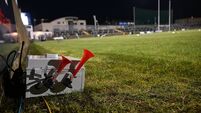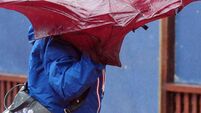Hurling's 'smart ball' could detect illegal handpasses

The GAA’s new digital sliotar could eventually solve hurling’s handpass debate, but the new ball won’t now be used this year, even if the championship goes ahead.
In the long term, the ‘smart ball’ would also have the capacity to replace Hawkeye as a score detection system, says Tomás Mullins, CEO of Greenfields Digital Sports Technologies (GDST), the company behind the sliotar.











